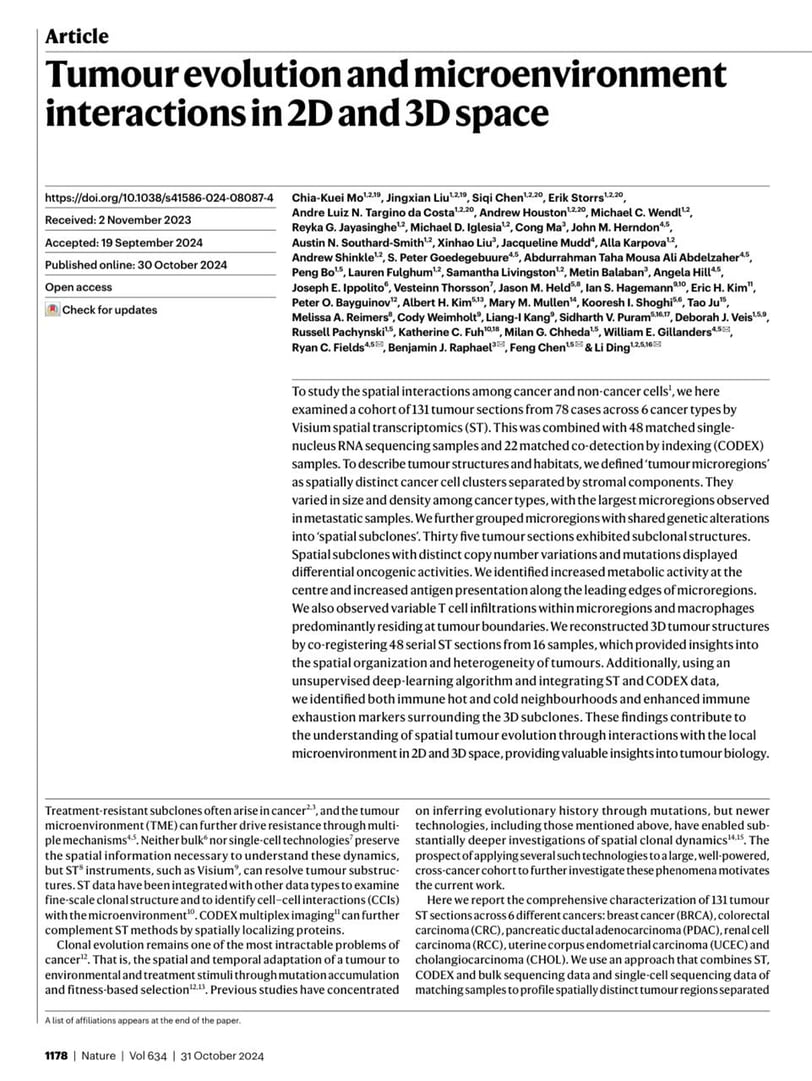Tumour evolution and microenvironment interactions in 2D and 3D space


This Paper of the Day examined the spatial interactions between cancer and non-cancer cells in a cohort of 131 tumor sections from 78 cases across 6 cancer types using Visium spatial transcriptomics (ST) combined with 48 matched single-nucleus RNA sequencing (snRNA-seq) and 22 matched co-detection by indexing (CODEX) samples. The authors defined "tumor microregions" as spatially distinct cancer cell clusters separated by stromal components, and grouped microregions with shared genetic alterations into "spatial subclones". They observed differential oncogenic activities between spatial subclones with distinct copy number variations and mutations. The study also identified increased metabolic activity at the center and increased antigen presentation along the leading edges of microregions, as well as variable T cell infiltrations and macrophages predominantly residing at tumor boundaries. By reconstructing 3D tumor structures, the authors gained insights into the spatial organization and heterogeneity of tumors. Additionally, using a deep-learning algorithm, they identified both immune hot and cold neighborhoods and enhanced immune exhaustion markers surrounding the 3D subclones.
